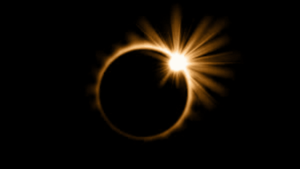On October 2, 2024, an annular solar eclipse will grace the skies, offering a spectacular sight known as the “Ring of Fire.” This celestial phenomenon occurs when the Moon appears smaller than the Sun, leaving a brilliant ring of sunlight visible around the darkened center. According to Space.com, the eclipse will last for over six hours, beginning at 9:13 PM IST and concluding at 3:17 PM IST the following day.
Viewing the Eclipse: Where and When
During this event, the peak of the annular solar eclipse will create the iconic “ring of fire” effect for viewers located within the path of annularity. However, those in India may be disappointed to learn that the eclipse will not be visible from the country. The timing coincides with nighttime in India, making it impossible to observe.
This means that the Sutak Kaal period—a traditional time of observance during eclipses—will not apply in India.
A Spectacle for Astronomy Enthusiasts
Despite the inability to witness this event from India, it presents a fantastic opportunity for astronomy enthusiasts and skywatchers worldwide to prepare for an extraordinary celestial event. Proper safety measures are vital for anyone attempting to view the solar eclipse directly. Certified eclipse glasses or a cardboard pinhole projector should be used to ensure safe observation.
Understanding the “Ring of Fire” Solar Eclipse
According to NASA, a “ring of fire” solar eclipse occurs when the Moon passes directly in front of the Sun but is too small to completely cover it. This creates the stunning visual effect of a fiery ring in the sky. The Moon orbits the Earth in an elliptical path, causing it to appear smaller at times (apogee) and larger at others (perigee).
What is a Solar Eclipse?
A solar eclipse takes place when the Sun, the Moon, and the Earth align, either fully or partially. This alignment allows the Moon to cast a shadow on Earth, blocking the Sun’s light in certain regions. Solar eclipses are rare occurrences because the Moon does not orbit in the exact same plane as the Sun and Earth. The periods when these celestial bodies align are known as eclipse seasons, which happen twice a year.
As the date of the annular solar eclipse approaches, it’s an exciting time for astronomy lovers around the globe. Though it may not be visible in India, the “Ring of Fire” will light up the skies in other parts of the world, offering a captivating spectacle for those lucky enough to be in the right location. Remember to prioritize safety when attempting to observe this remarkable event!














